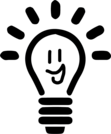
Genius Hour Unit plan created by Adam Barlow, adapted for an engineeirng design class.
- Subject:
- Technology and Engineering Education
- Material Type:
- Activity/Lab
- Author:
- ADAM
- Date Added:
- 02/23/2022

Genius Hour Unit plan created by Adam Barlow, adapted for an engineeirng design class.
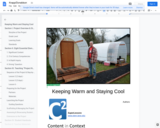
Consistent housing is a continual issue for our community, evidence of this is readily observable in the neighborhoods surrounding our classrooms. Over the course of 15 classroom hours, students will be exploring how they can insulate structures to protect from extreme hot and extreme cold using recycled and/or repurposed materials.
Students will make observations and collect data related to temperature. Student findings will be communicated through science journals, student generated models (charts, 3D structures, drawings, etc.).

For the first time on UEN’s PDTV, we’re shining the spotlight on school leadership! Host Katie Blunt travels to Orangeville, Utah to visit principal John Hughes of Cottonwood Elementary to discuss how his experiences at the UEN Leading Schools Conference have provided him with ideas to support his staff, allowing teachers to continuously improve their skills and provide the best education to their students.
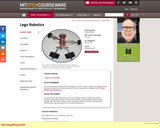
LEGO® robotics uses LEGO®s as a fun tool to explore robotics, mechanical systems, electronics, and programming. This seminar is primarily a lab experience which provides students with resources to design, build, and program functional robots constructed from LEGO®s and a few other parts such as motors and sensors.
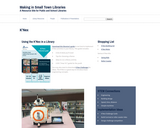
Introduce basic engineering concepts with K'Nex! Designed to move fun-powered imaginations of boys and girls forward, K'NEX knows a child's journey to wow begins with a single click! K'NEX has offered STEAMagination inspired play to kids through creative building toys for a quarter of a century.

Students will use the engineering process to develop an insulated container to minimize the loss of heat energy.
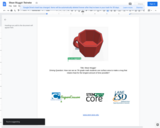
Driving Question: How can we as 7th grade math students use surface area to make a mug that retains heat for the longest amount of time possible?

Students will practice their design and creativity skills with this project. They will need to make a promotion or advertisement for their favorite team or band/singer. They are in charge of creating a new poster using Pages or a 30-60 second promotional video using iMovie.The purpose of this assignment is to show that they know and understand design principles and can apply them to make an attractive and relevant promotion. Image created by author.

Learn how Mary Wade, a 5th-grade teacher at Provost Elementary, uses Canvas for Elementary (C4E) to create a flexible learning environment that supports all students. Mary shares her effective design and integration strategies for this tool and discusses how it supports student learning and communication. Watch the video to learn more about using C4E in your classroom.

In this special two-part episode of UEN’s PDTV, host Katie Blunt is visiting the Jean Massieu School of the Deaf in Salt Lake City to see Utah’s EdTech Competencies in action.
This episode will follow Katie as she meets with middle school math teacher Coleen Jennings who is showing us how she integrates UDL (Universal Design for Learning) in her lessons to ensure they are engaging and accessible for all her students.

Students will identify wind power as a source of energy and use the engineering process to determine construction of the blades, the housing unit and wind power enough volts to light one LED light bulb.
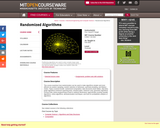
Studies how randomization can be used to make algorithms simpler and more efficient via random sampling, random selection of witnesses, symmetry breaking, and Markov chains. Models of randomized computation. Data structures: hash tables, and skip lists. Graph algorithms: minimum spanning trees, shortest paths, and minimum cuts. Geometric algorithms: convex hulls, linear programming in fixed or arbitrary dimension. Approximate counting; parallel algorithms; online algorithms; derandomization techniques; and tools for probabilistic analysis of algorithms.
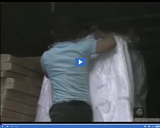
The Purple Coat, written by Amy Hest, illustrated by Amy Schwartz. Despite her mother's reminder that "navy blue is what you always get," Gabby begs her tailor grandfather to make her a beautiful purple coat. Viewers visit the Fashion Institute of Technology where they explore the fascinating world of design.
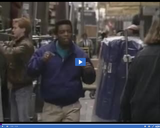
The Purple Coat, written by Amy Hest, illustrated by Amy Schwartz. Despite her mother's reminder that "navy blue is what you always get," Gabby begs her tailor grandfather to make her a beautiful purple coat. Viewers visit the Fashion Institute of Technology where they explore the fascinating world of design.
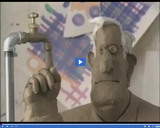
The Purple Coat, written by Amy Hest, illustrated by Amy Schwartz. Despite her mother's reminder that "navy blue is what you always get," Gabby begs her tailor grandfather to make her a beautiful purple coat. Viewers visit the Fashion Institute of Technology where they explore the fascinating world of design.
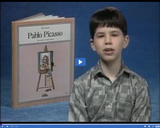
The Purple Coat, written by Amy Hest, illustrated by Amy Schwartz. Despite her mother's reminder that "navy blue is what you always get," Gabby begs her tailor grandfather to make her a beautiful purple coat. Viewers visit the Fashion Institute of Technology where they explore the fascinating world of design.
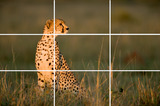
This lesson, activity, and provided template will guide students to interact with the Rule of Thirds in existing images and encourge them to consider this design concept when capturing images.

In this project students will research and then build a basic solar cooker shell made out of cardboard. Then they will run a variety of materials through experiments. Data from the experiments will be used to determine which materials should be added to the solar cooker shell to improve its ability to heat up food.
This project was created as a collaboration between a science and an engineering/woodshop class. The engineering class researched and build the basic solar cooker cardboard shells. The science class tested additional materials to add to the shells to improve the solar cookers. Then the engineering class, following the directions from reports created by the science class, added the materials to the solar cooker shells to create the final products.

This article for elementary teachers focuses on three tools that allow educators to publish to the web for free - Instructional Architect, Filamentality, and TeacherTube. Design hotlists, webquests, scrapbooks, and upload video.
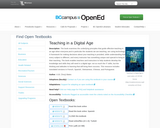
The book examines the underlying principles that guide effective teaching in an age when all of us, and in particular the students we are teaching, are using technology. A framework for making decisions about your teaching is provided, while understanding that every subject is different, and every instructor has something unique and special to bring to their teaching.The book enables teachers and instructors to help students develop the knowledge and skills they will need in a digital age: not so much the IT skills, but the thinking and attitudes to learning that will bring them success.